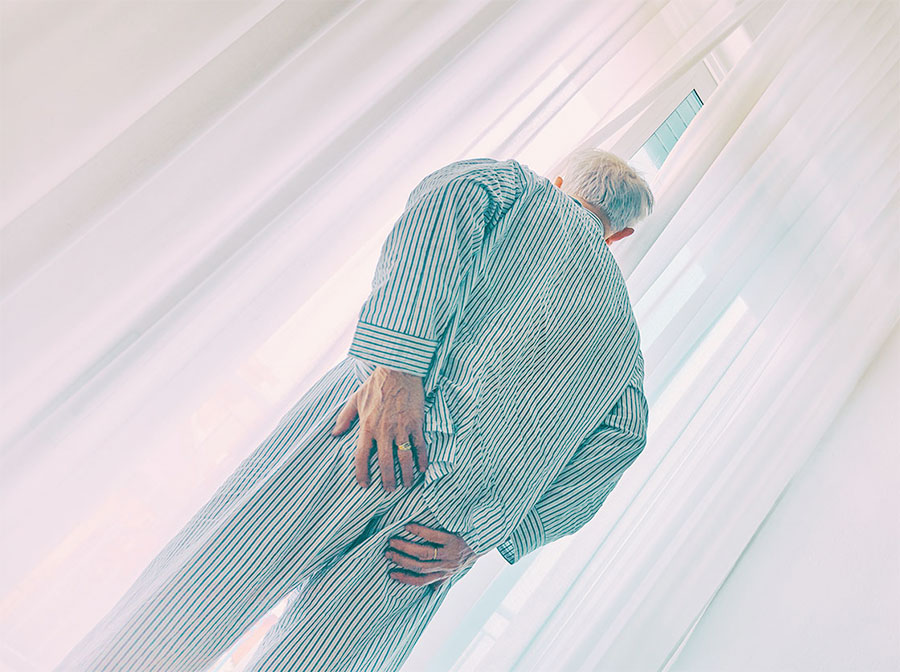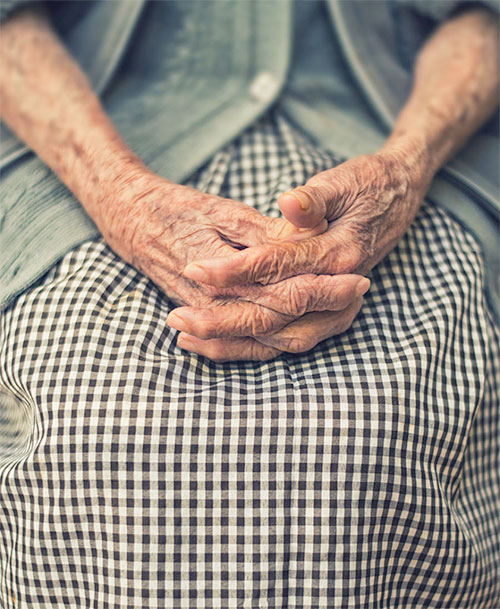Pain Management in the Elderly: A Helpful Guide for Caregivers
By: Rosemarie Tamunday Casanova

Pain and pain management are a growing concern among Americans age 65 and older¹. It is estimated that every second, persons over the age of 75 have moderate to severe pain on a daily basis. More than half of persons aged 65 years or more do not function optimally due to pain.
Pain defined
Pain is an unpleasant sensory and emotional experience associated with actual or potential tissue damage², or described in terms of such damage.
They are classified into:
- Acute, usually of sudden onset and lasting less than a month.
- Chronic, lasting between 3 to 6 months and sometimes resulting in long-term psychological issues.
Pain in the elderly
Data from literature indicate that 40-80% of elderly people at home, 16-27% of institutionalized ones and 25% of elderly with cancer do not receive treatment for pain.
In American in home senior care, 26% of people have daily pain and about 25% of them do not receive analgesic drugs.
In particular, analgesic therapy is poorly undertaken in people with cognitive impairment and, in most cases, pain is not reported in their medical records.
Aging leads to physical changes that influence the development of pain. However, psychological problems such as the loss of the partner may play a role.
In old age, pain is often seen as part of aging or something which the elderly must ‘learn to live with’.
The problems of diagnosing chronic pain in older patients are complex and start with the perception of the patients themselves.
There is substantial evidence to show that pain in older patients is not recognized or managed as it would be in young adults.

Causes of pain in the elderly
Various conditions lead to pain but in the elderly, commonly identified causes include:
- Osteoarthritis
- Fibromyalgia
- Peripheral artery disease leading to poor circulation in the legs limbs
- Damage of the peripheral nervous system
- Trauma due to falls
- Post-surgical pain
- Nighttime leg cramps
- Post stroke syndromes
- Malignancies
- Bad posture, etc.
Pain can also be associated with mood disorders such as depression, anxiety, sleep and behavioral disorders, which heavily affect the quality of life, causing an increase in disability.
The challenges of pain management in the elderly
The management of pain in the elderly is often a sensitive but essential topic. Both the diagnosis and the treatment of pain in the elderly patients present peculiar challenges.
As a means of reducing these challenges, the American Geriatrics Society has provided the first clinical practice guidelines for the management of chronic pain in elderly people. More recently also, the British Geriatric Society has produced a user-friendly guideline for doctors for the treatment of pain in older patients.
These measures are in response to the need to improve awareness and implement appropriate assessment tools and treatments, to alleviate suffering and improve the quality of life in elderly patients.
In particular, they represent a comprehensive review of the evidence in favour of a wide range of specific treatments for pain management in the elderly, not only the appropriate therapeutic options but also complementary therapies such as new psycho-educational approaches and psychological and physical management methods.
In spite of these measures, a certain reluctance to administer more painkillers in the elderly still persists. Some identified factors may be responsible for this:
For example, elderly people do not always perceive acute pain due to injuries or acute illnesses as a warning signal. This may often delay the treatment of illnesses which as a result, run the risk of becoming chronic.
Also a problem is the fact that multiple diseases tend to occur in elderly people and so the primary cause of the pain is often difficult to identify.
The fear of an unfavourable diagnosis or of having to take several medications increases the tendency of the elderly to ignore pain.
The consequences of untreated pain on the quality of life of the elderly and residents of long term care facilities in particular require a holistic therapeutic approach.
Pain assessment in the elderly
In order to effectively manage pain in the elderly, skillful pain assessment by caregivers is important. This can be challenging especially in individuals with cognitive impairment.
Self-reporting is seen as the best evidence for pain and the assessment of pain severity.
Pain assessment can be done using several tools which include:
- The numerical scale: which runs from 0 to 10, 10 being the most severe pain. The resident is asked to score his pain using the scale.
- The Simple Verbal Scale: With this, the resident qualifies their pain with a simple term (weak, moderate, or intense).
- The Visual Analogue Scale: where the resident assesses their pain using a slider ranging from “not bad at all” to “very bad”.
The effective management of pain involves knowing how to observe and measure it in order to respond effectively.
When the causative factors have been identified and treatments initiated, it is appropriate and very beneficial to keep pain logs or diaries where patients are encouraged to record their data daily.

Pain therapy in the elderly
The treatments of pain in elderly people can be pharmacological or non-pharmacological.
Although adverse drug effects carry a significant risk in them, drug therapy for pain remains the principal modality of pain management.
Due to their increased sensitivity as well as reduced drug clearance, lower doses are recommended and usually quite effective as compared to higher doses in their younger counterparts, especially with opioid analgesics.
Some of the drugs used in pain management include:
- Acetaminophen
- NSAIDS
- Opioids
Non-drug therapies are an important pillar of pain therapy and include:
- Acupuncture
- Cognitive behavioral Therapy
- Transcutaneous electrical nerve stimulation (TENS)
- Cold laser therapy
- Hypnosis
- Massage therapy
- Exercise, etc.
Measures that improve mobility are particularly helpful. This is because exercise stimulates the metabolism, lubricates the joints and aids the release of tension.
It also helps to prevent bad posture which can lead to excessive stress on joints, and wear and tear. In addition, the psyche also benefits from the exercise.
Many older people enjoy exercise therapy in groups. However, exercise should only be initiated after the pain has first been reduced to a tolerable level.
In the management of pain in the elderly therefore, there is need for drug as well as non-drug therapy.
Therapy has to be individually tailored, to accommodate the personal needs of the patient. It is no good recommending an aqua gym to a senior woman if she feels uncomfortable in her swimsuit.
Also, the place of therapy should be easily accessible so that the patient participates regularly. It is helpful to involve the family members who would be of assistance in making sure appointments are kept.
Pain is by no means an inevitable part of aging and it does not help anyone to tacitly endure it. Every effort should be made to identify it, address it, and manage it effectively and holistically for the benefit of the individual.
References:
¹ Jones MR, Ehrhardt KP, Ripoll JG, et al. Pain in the elderly. Curr Pain Headache Rep. 2016;20(4):23.
² Pain Terms – IASP Terminology
